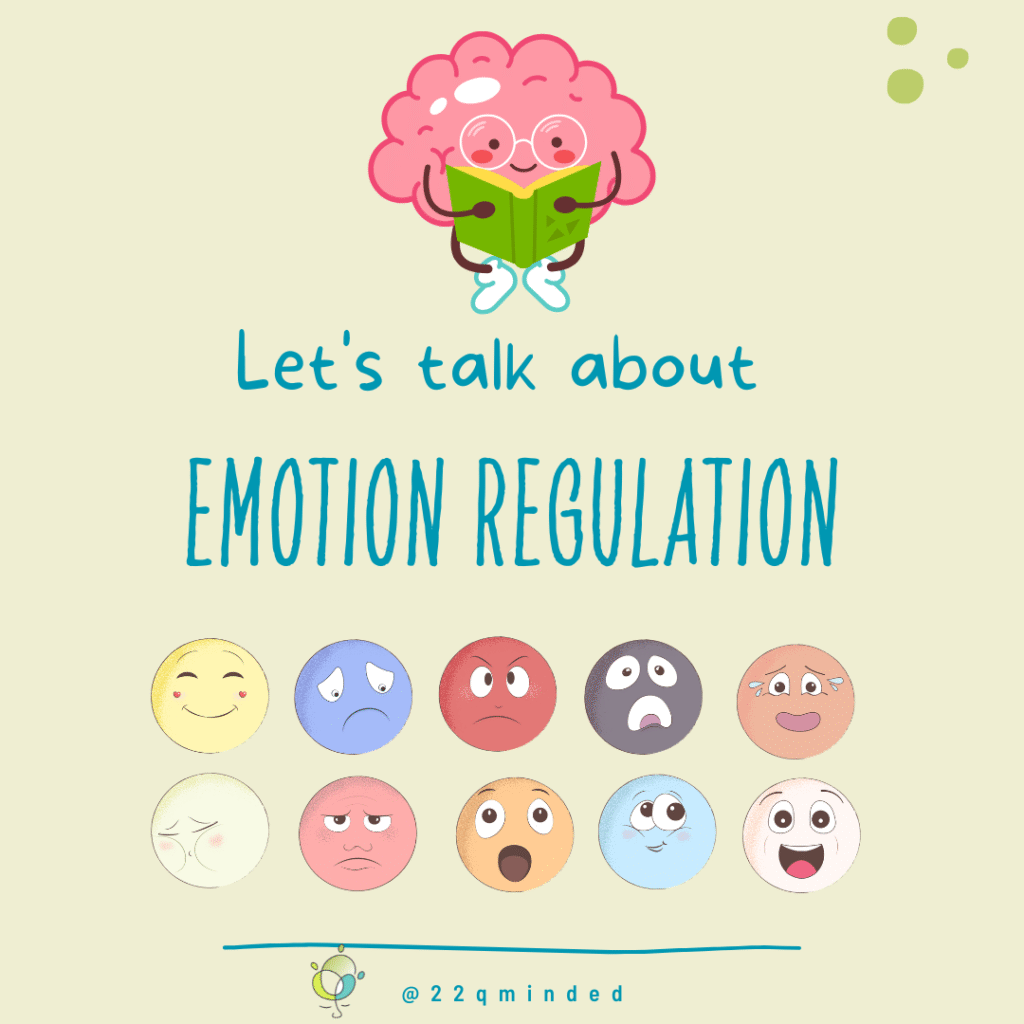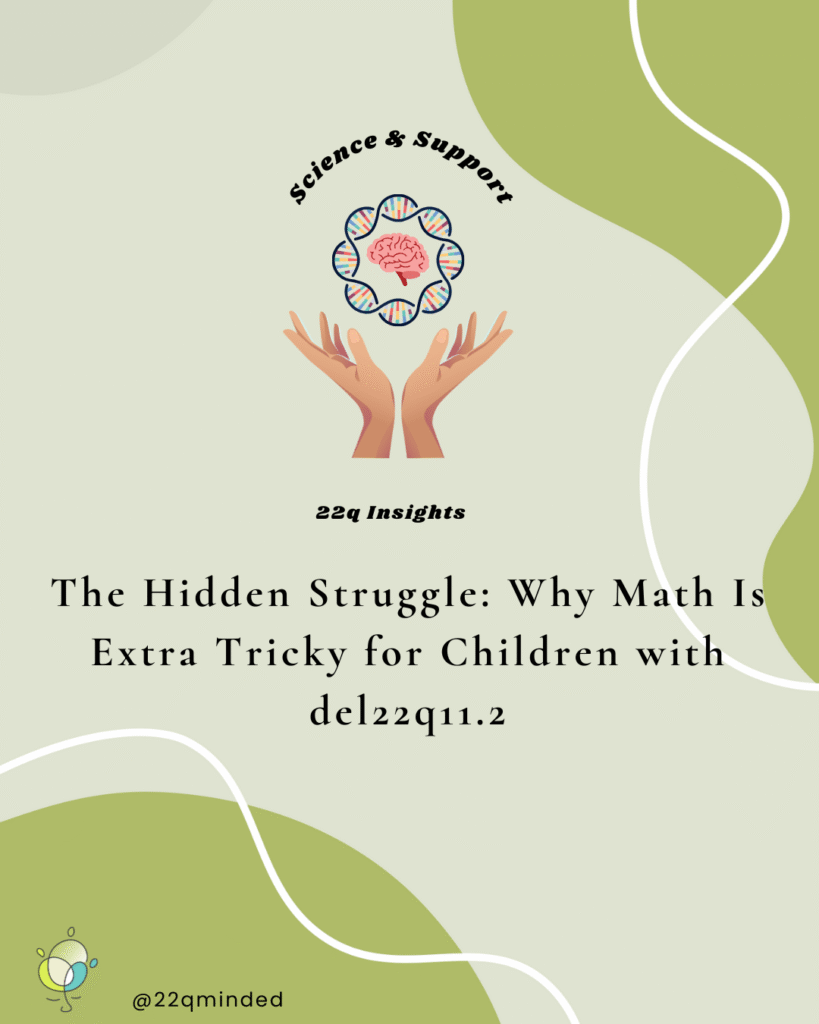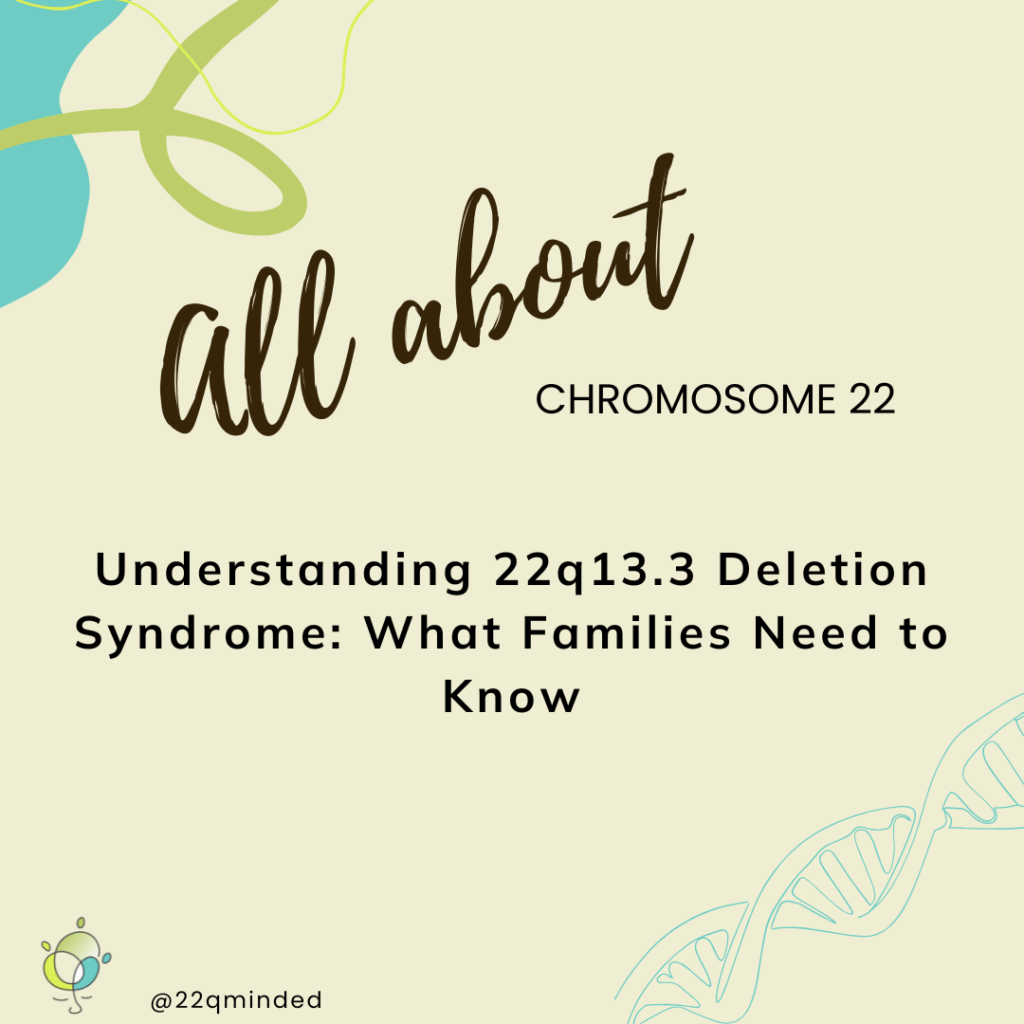Emotions are part of being human; they help us connect, communicate, and make sense of the world. But for children with 22q11.2 deletion syndrome (and other 22q-related conditions), regulating emotions can sometimes feel like an uphill climb. This isn’t because they aren’t trying, or because they “should” know better, but because emotion regulation is a complex skill that develops over time, and can be affected by brain development, life experiences, and support systems.
In this post, we’ll explore what emotion regulation is, why it matters, how it can manifest differently in children with 22q, and practical ways parents, caregivers, and professionals can support it using an emotion coaching approach. In later posts we will talk about self-regulation (parents) and co-regulation as other important components of helping children develop effective emotion regulation skills.
What is Emotion Regulation?
Emotion regulation is the ability to manage and respond to our feelings in ways that are helpful and healthy. It’s about finding balance, not about avoiding big feelings, but learning how to ride the emotional waves without getting swept away.
For children, this means learning strategies to control the intensity and duration of their emotional reactions. Over time, this helps them cope with challenges, build resilience, and feel more confident navigating the ups and downs of daily life.
How Do Children Learn to Regulate Their Emotions?
Most children develop emotional regulation skills through observation, socialisation, and guidance. They watch how adults manage frustration, sadness, and excitement. They receive feedback and encouragement from parents, teachers, and peers. Over time, they learn what works for them.
But it’s not just imitation. Emotional regulation is shaped by:
- Genetics and brain development
- Life experiences and relationships
- Mental health
- Personality and temperament
- Environmental stressors
For children with 22q, these factors can interact in unique ways.
Emotion Regulation and 22q
Many individuals with 22q experience challenges with emotional regulation. This can show up differently from child to child:
- Avoiding or withdrawing from uncomfortable feelings
- Worrying excessively
- Having emotional meltdowns
- Showing frustration or anger when things don’t go as expected
It’s important to remember that these responses aren’t about being “difficult”, they are often the child’s best available way of coping in that moment.
Why It Matters for Mental Health
When emotion regulation is hard, everyday challenges can feel overwhelming. This can contribute to anxiety, depression, or social difficulties. And it works the other way too, when a child’s mental health is struggling, regulating emotions becomes even harder.
That’s why supporting emotion regulation early and consistently is one of the most powerful ways to promote long-term well-being.
Supporting Emotion Regulation: The Emotion Coaching Way
One of the most effective ways to help children with 22q develop emotional regulation is through emotion coaching. This approach, popularised in programs like *Tuning in to Kids*, helps children feel understood, safe, and capable of managing their feelings.
Rather than trying to make big feelings “go away,” emotion coaching teaches children that emotions are normal, temporary, and manageable, and gives them tools to handle them.
Here’s how you can use this approach:
1. Notice and Tune In
Be aware of your child’s emotional cues — facial expressions, tone of voice, body language. Sometimes emotions show up before words do.
💡 Example: “I can see you’re clenching your fists and frowning. I wonder if you’re feeling frustrated?”
2. See Emotions as Opportunities for Connection
Instead of viewing meltdowns or tears as something to stop, see them as a moment to connect and teach.
💡 Example: “It looks like you’re feeling worried about going to school. Let’s talk about what’s on your mind.”
3. Name the Feeling
Help your child put words to what they’re experiencing. This builds emotional literacy and reduces the intensity of the emotion.
💡 Example: “It sounds like you’re feeling disappointed because the game didn’t go the way you hoped.”
4. Validate Their Experience
Let them know their feelings are real and understandable. Validation doesn’t mean you agree with their behaviour — it means you acknowledge their inner world.
💡 Example: “It makes sense you’re upset. You were really looking forward to that.”
5. Guide Towards Problem-Solving
Once your child is calmer, help them think of ways to handle the situation next time. Offer strategies and explore ideas together.
💡 Example: “Next time, if you start feeling frustrated, what could you do? Maybe take a break, or ask for help?”
6. Practice Coping Tools Together
Emotion regulation skills are learned through repetition. Practice calming strategies when your child is calm, so they’re easier to access during big feelings:
-
Slow belly breathing
-
Counting to 10
-
Using a calm corner or sensory space
-
Gentle movement, like stretching or walking
Why This Matters for Children with 22q
For many children with 22q, emotional regulation challenges can be heightened by differences in brain development, anxiety, and social processing. An emotion coaching approach works because it focuses on connection first, helping the child feel understood before trying to change the behaviour.
This creates a foundation of trust and emotional safety, which is essential for learning regulation skills over time.
Final thoughts
Supporting emotional regulation is not about stopping children from feeling big emotions; it’s about giving them the tools to navigate those emotions with confidence and self-compassion. For children with 22q, this can be a gradual process, but every small step counts. By tuning in, validating their feelings, and guiding them gently toward coping strategies, we can help children with 22q grow into resilient, self-aware individuals who know how to care for their own emotional well-being.
We’d love to hear from you: How does your child express their emotions? What strategies have you found helpful in your family or classroom? Share your experiences in the comments or join the conversation in our 22qMinded community.
Stay connected: Sign up for our newsletter for more tips, resources, and stories from families walking this journey together. If you want to learn more sign up for our live and on-demand Feelings in Focus program – an emotion coaching program specifically designed for parents of children with 22q-related conditions, or our live and on-demand webinar about emotion regulation that is coming soon. Visit www.22qminded.com/shop to learn more.




